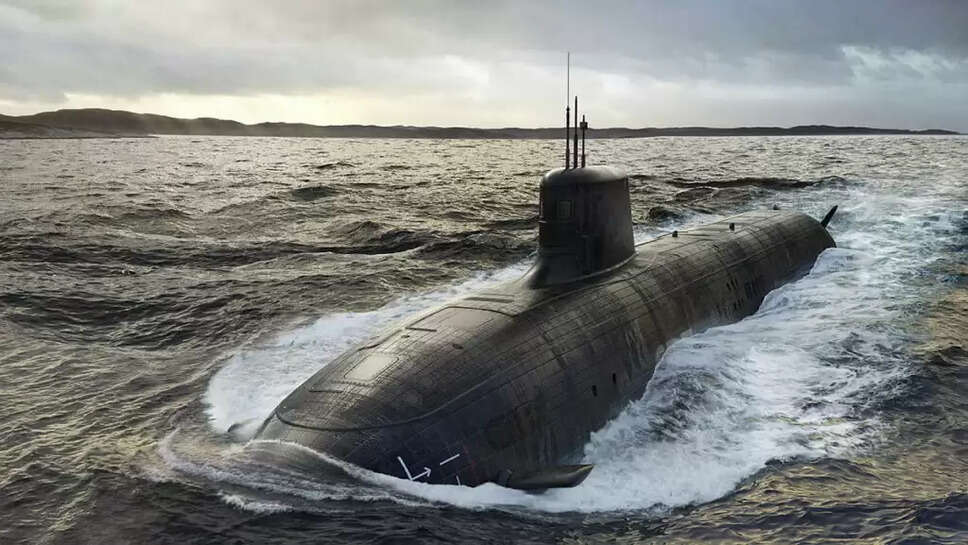Why the U.S. Is Reviewing AUKUS Now

In June 2025, the Pentagon quietly initiated a formal review of the AUKUS submarines pillar—the 2021 trilateral pact among the U.S., UK, and Australia—to reassess America’s commitments under the framework. Led by Under‑Secretary of Defense for Policy Elbridge Colby, a Trump appointee critical of AUKUS, the review aims to determine whether the U.S. can sustain its obligations under what has been labeled “America First” realignment
The urgency stems from concerns over the strain on U.S. shipbuilding—new submarines are needed for both U.S. fleet requirements and those intended for Australia. Critics, including Colby, have warned that diverting Virginia-class submarines to Australia while China’s naval power rises could leave the U.S. short-handed
A report within Congress even suggests diverting the funds Australia intends to spend on submarines toward alternative capabilities—like long-range drones, missiles, or strategic aircraft—allowing the U.S. to retain its Virginia-class subs for its own priorities
⏳ What the Review Covers
-
Virginia-Class Sales: Whether the U.S. can deliver the 3 to 5 Virginia-class attack submarines promised between 2032–2038
-
Industrial Capacity: U.S. shipyards currently produce around 1.2 subs per year; the review must verify if commitments to scale up to 2‑2.3/year by 2028 are realistic .
-
Strategic Priorities: Alignment with the current administration’s defense policy—balancing Indo-Pacific strategy against domestic readiness under “America First”
-
Australia’s Defense Burden: Whether Australia is meeting expected increases in defense spending (targeted by U.S. to be 3–3.5% of GDP)
This review is expected to conclude in roughly 30 days, after which the Pentagon will present its findings
🔍 Australia’s Response and Confidence
Australia’s Defence Minister Richard Marles has emphasized that such reviews are routine during administrative transitions and should not be interpreted as signs of retreat
Marles reinforced that AUKUS is a long-term, multidecade initiative offering strategic value that transcends any U.S. internal review. Australia continues to progress on its commitments, including raising defense spending—apparently to 2.3% of GDP—and earmarking funds for both submarines and naval infrastructure
Former Foreign Minister Alexander Downer confirmed behind-the-scenes conversations with Colby, noting strong support from individuals aligned with Trump’s administration for continuing Virginia-class transfers and submarine construction in Adelaide
⚠️ The Critics’ Case
Significant criticism has surfaced, raising strategic and financial concerns:
-
Shipbuilding Constraints: U.S. yards are currently behind target timelines, with production shortfall potentially meaning no spare submarines left for Australia in the next decade
-
Financial Burden: Australia faces a potential A$300–A$400 billion tab over decades, raising fears of budget overruns and opportunity cost
-
Sovereignty Risks: Some critics assert Australia could end up hosting U.S.-flagged subs controlled by U.S. crews—unlike the deal’s vision of Australian sovereign ownership
-
Strategic Misalignment: Former prime ministers like Paul Keating and Malcolm Turnbull have said that U.S. reconsideration could offer a chance for Australia to reassess its strategic autonomy
🛠 Broader AUKUS Implications
Beyond submarines (Pillar I), the AUKUS deal encompasses advanced capabilities—quantum computing, undersea drones, cyber operations, and more (Pillar II). Unlike the subs pillar, this segment is widely considered resilient, with discussions about expanding involvement to partners like Japan and possibly New Zealand
Moreover, Australia is already investing in nuclear infrastructure—submarine base expansion (e.g., HMAS Stirling near Perth), skilled workforce training, and the establishment of the Australian Submarine Agency
🇦🇺 Why Australia Remains Hopeful
Australia’s confidence stems from:
-
Bipartisan U.S. Support: Both parties have backed AUKUS. Notably, Congress has required that any sub sale not compromise U.S. strategic capacity .
-
Allied Signals: The UK has affirmed its commitment after its own review
-
Strategic Value: For Australia, AUKUS is key to deterrence in the Indo-Pacific—particularly in light of rising Chinese assertiveness
-
Concrete Progress: Investments in shipyards, workforce training, and infrastructure are already underway—suggesting a buildup too far along to reverse .
🧭 Stakes for U.S.–Australia Relations
Should the U.S. cancel or scale back submarine deliveries, consequences could include:
-
Strategic Credibility Loss: Allies worldwide could view America as an unreliable partner in defense.
-
Regional Deterrence Weakening: AUKUS aims to deter not just China, but preserve regional stability through undersea power projection.
-
Domestic Fallout: A scaled-back deal would be at odds with Congress, which has legislated protections around AUKUS funding .
That said, proceeding without caution may risk U.S. naval readiness and overspend at a time when the U.S. navy is already challenged .
🔮 What Happens Next?
-
30-Day Review: The Pentagon will soon complete and release conclusions. Likely outcomes include: affirmation with conditions; minor adjustments (e.g., pacing submarine deliveries); or renegotiation.
-
Australia’s Response: If asked for greater cost-sharing or accelerated defense budgeting, Canberra may comply to keep the deal on track.
-
Congressional Leverage: Any change from the Pentagon will trigger pressure from Congress, which has acted to shore up AUKUS funding
-
Future Trajectory: Even if Pillar I slows, Pillar II and other Indo-Pacific initiatives will likely continue developing across trilateral lines.
🧾 Bottom Line
The U.S.-led review introduces tension into a high-stakes defense initiative. However, Australia remains firm in its belief that AUKUS—especially the submarine agreement—will move forward. The core disagreement isn’t over whether the deal is important, but over timing, funding, and industrial readiness.
Should America choose to forge ahead, it will likely instate modifications—adjusting production pace, cost-shares, or timelines. If not, the review may still serve as a signal that P1 delays are possible—but unlikely to derail the entire pact.
